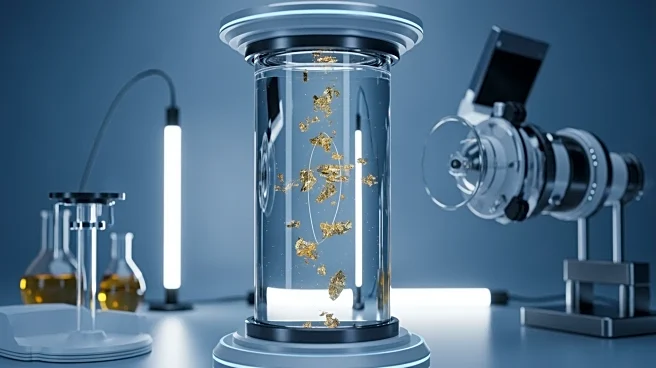What's Happening?
Researchers at Penn State have introduced a novel method for predicting superconductors, potentially paving the way for materials that can conduct electricity without resistance at higher temperatures. This breakthrough, supported by the Department of
Energy's 'Theory of Condensed Matter' program, aims to overcome the limitations of current superconductors, which only function at extremely low temperatures. The team, led by Professor Zi-Kui Liu, has developed a predictive approach that could identify materials capable of superconductivity at more practical temperatures. This method combines the Bardeen-Cooper-Schrieffer (BCS) theory with density functional theory (DFT) to model electron behavior in potential superconducting materials.
Why It's Important?
The discovery of room-temperature superconductors could revolutionize energy transmission and electronic systems by eliminating energy loss during electricity conduction. This advancement holds the potential to create more efficient power sources and transform the way electricity is used globally. The ability to predict and identify new superconducting materials at higher temperatures could lead to significant technological and economic benefits, reducing energy costs and enhancing the performance of electronic devices. The research could also stimulate further scientific exploration into high-temperature superconductivity, potentially leading to groundbreaking applications in various industries.
What's Next?
The Penn State team plans to apply their method to predict the transition temperatures of existing high-temperature superconductors and search for new materials with higher transition temperatures. They aim to build a comprehensive database of potential superconducting materials and collaborate with experimental scientists to test the most promising candidates. If successful, this approach could lead to the discovery of high-temperature superconductors suitable for practical applications, potentially even achieving superconductivity at room temperature.














